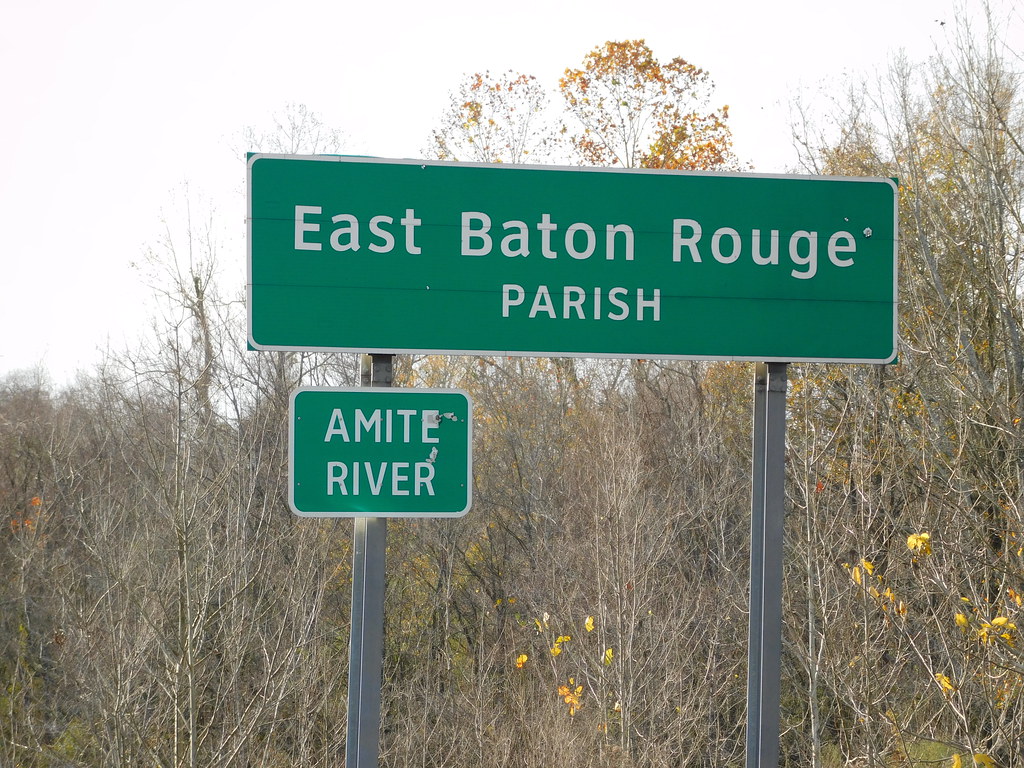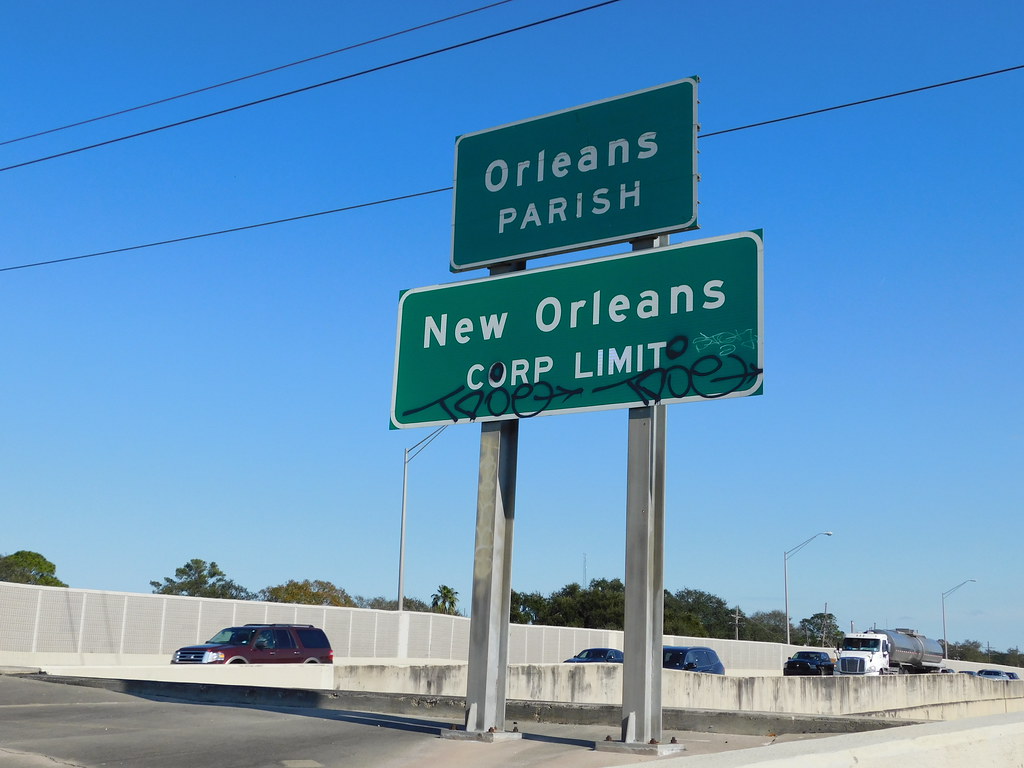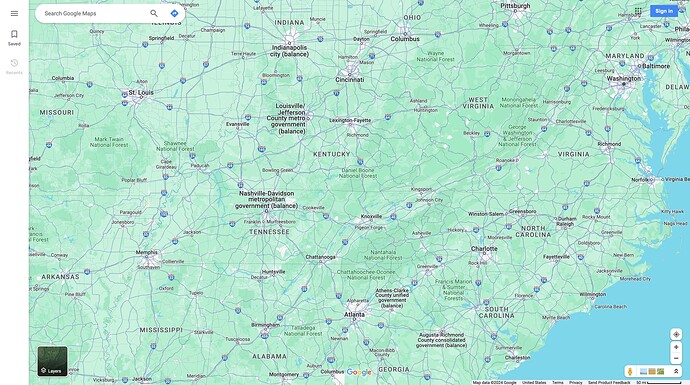Contrary to the Census Bureau, there isn’t actually a general universal class of “consolidated city–county”; it’s just a description of many consolidations, each unique as a snowflake. The City and County of San Francisco is literally one entity, functioning as both a city and a county simultaneously.
The dual nature has caused some back and forth between mappers who want OSM to have a full set of counties and a full set of cities, and those who want to represent the city as it is. Each of these relations has been deleted at some point:
- Relation: San Francisco (111968) | OpenStreetMap
- Relation: 15646499 | OpenStreetMap
- Relation: 396487 | OpenStreetMap
(In the midst of all that, San Francisco briefly became a speed limit.)
East Baton Rouge Parish and Baton Rouge form a consolidated city–parish government, but they remain two distinct entities. You can enter East Baton Rouge Parish without entering Baton Rouge proper:
Conversely, New Orleans is coterminous with Orleans Parish. The parish no longer has a government, but any list of parishes will include it rather than “New Orleans”, and its boundary is prominently marked on the road:
In order to maintain uniform, stable statistics, the Census Bureau conflates all these concepts together, erasing the nuances between them, and even creates geographies out of whole cloth for portions of interest to demographers. But these geographies have less relevance to the typical map user than even a New York community district. This is a risk I had to be mindful of recently when devising a place classification system that relies on census geographies. There too, the task was to determine why the bureau makes a certain call, not to just accept it at face value.
This week, Google Maps made the mistake of putting too much faith in uniformity. Among other things, they went so far as to replace some of the largest U.S. cities with their balances, the Census Bureau’s catch-all for the portion of the consolidated city–county that doesn’t have another city nested within it:
Anyone who demands semantic precision in this line of business is badly overestimating the competition.


